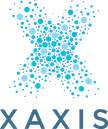Facebook’s DSP: Will the Data Be Enough in a Programmatic World?

Programmatic has emerged from the outer echelons of the ad-tech world and taken its place on advertising’s main stage. The industry is now on board with what the experts have known all along – that programmatic’s real-time audience insights are the best foundation for effective campaigning. The shift from niche to normal is largely attributable to the technology’s ability to respond to what today’s marketers want and what brands need: to target campaigns on audience, not just content. But programmatic’s acceptance into the mainstream has also been helped along by the decision of technology’s most influential players to step into the arena.
This month’s news that Facebook is rolling out a Demand-Side Platform (DSP) in early 2016 to perform programmatic buys using their ‘people-based’ advertising approach confirms the value of audience data-driven targeting in digital advertising. Although the details of Facebook’s DSP product (the fourth element in its ad platform business) have yet to be publicly announced, the strength of the company’s first-party audience data and cross-device insights will hold considerable appeal for marketers looking to send more messages to consumers in more places online.
The move is a clear sign that programmatic has matured and that targeting audiences is advertising’s new currency. This is not only evident online, but increasingly in traditional offline channels too, such as television. In a landscape that is evolving so quickly, how will Facebook’s DSP compete? Will its first party data – undoubtedly strong, but nonetheless limited – be compelling enough for advertisers who can’t afford to miss a trick when it comes to campaigning to evermore sophisticated audiences?
First-party data alone won’t be enough to reach the right people in the right place at the right time. Audience-based campaign targeting must tick all of these boxes; compromising on any area will be detrimental to success. Marketers will need to mix Facebook’s data with high-quality third-party audience data from independent providers to tailor particular messages in specific contexts to consumers – about whom they will have a complete picture.
Understanding – really understanding – who consumers are and what they think of brands allows marketers to design communications strategies with a human element. This is critical in an era where consumers call the shots. Treating consumers as real people, not compilations of data, is as important as discovering real insights about them. And these insights live within a wide range of data types that go beyond the first-party nature of Facebook’s user profiles.
—-
Full article available at http://bit.ly/1QeiacX (link is external)


